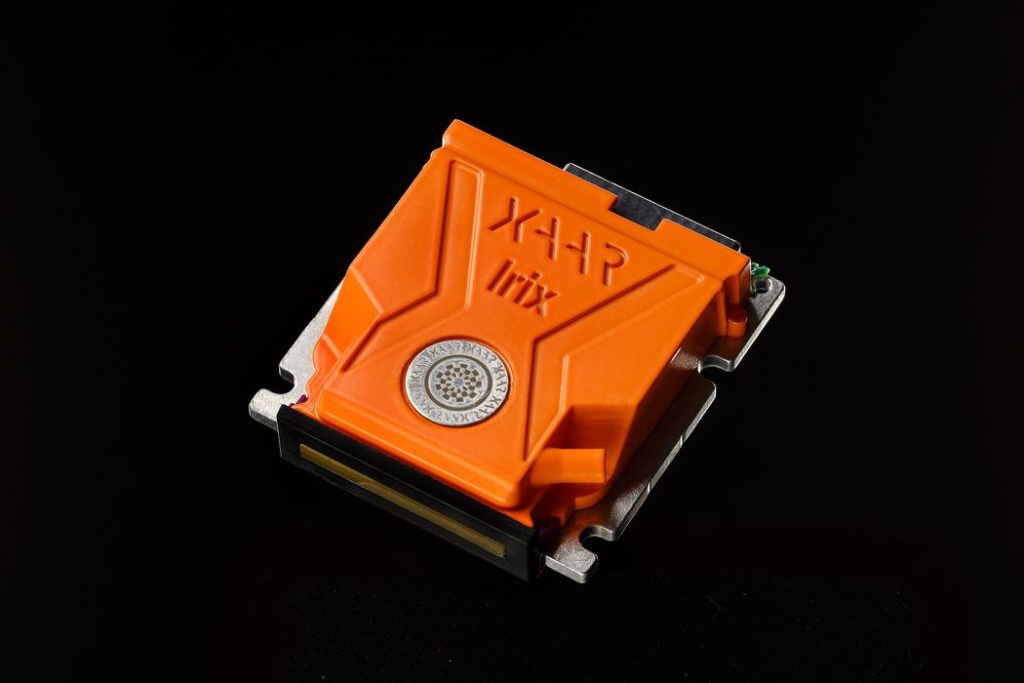
Xaar announced the new Irix printhead for high-speed printing.
The German company produces a variety of industrial-level bulk inkjet printheads. These are devices that can selectively deposit identical droplets of fluid on a surface at incredible speed.
That may sound like a technology for 2D paper printing, and you’d be correct: many of Xaar’s products are used for high-speed 2D printing or marking.
But there is another possibility here: 3D printing.
There are several 3D printing processes that make use of highly dense inkjet printheads to deposit binder or other fluids used in the 3D printing process. In a binder jet process, for example, a bed of powder is selectively covered with binding fluid, layer-by-layer. Depending on the specific process, a heat treatment may be used to finalize the solidification of the powder with the binder to form a complete 3D object.
The interesting part of this technology is the speed. Advanced inkjet printheads are used in industrial 2D printers that can produce a large printed sheet in seconds. It’s quite amazing to watch this process, as the paper goes through these machines so quickly it’s hard to believe printing has taken place. The most speedy 2D printers often use roll paper input, which is faster to deliver than sheet fed.
That’s what Xaar makes.
Their new Irix printhead prints 40pL (picoliter) droplets at up to 8.3kHz — that’s 8,300 droplets per second! It has 185 nozzles per inch, and has a print width of 17mm.
Now imagine you’re designing a binder jet 3D printer using this technology. If you equip a moving arm that crosses your powder bed, we can calculate how fast it can move. If the print bed is 500mm wide, and we require 0.1mm voxels, we need to deposit 5000 droplets in one pass. But if we’re dropping at 8.3kHz, that means one pass would be only 0.6 seconds!
The actual timing would be somewhat different as there are other factors to consider, but I think you get the idea here: you can nearly instantly 3D print an entire layer of powder with this type of printhead.
Has this type of 3D printer been produced? Indeed they have. Two notable examples are dp polar, which produced the massive rotating bed AMpolar i2 3D printer, and Stratasys’ new H350, both of which use this concept.
With the new Irix printhead it may be possible to build even faster 3D printers using this type of powder process.
Will that happen? I think yes and no, because there’s one fact that you may not know about.
Stratasys owns a large piece of Xaar.
Stratasys has heavily invested in Xaar over the past few years, and is said to own 45% of the company at last report.
It may be that while Xaar is still an independent company they can take on clients that might compete with Stratasys. Or maybe not. Should Xaar be approached with a proposal there will certainly be some internal discussions.
One possibility is that Stratasys might acquire Xaar outright to solidify their hold on this type of technology.
For now, Xaar has the new Irix printhead and anyone can attempt to build a high-speed 3D printer with it.
Via Xaar

